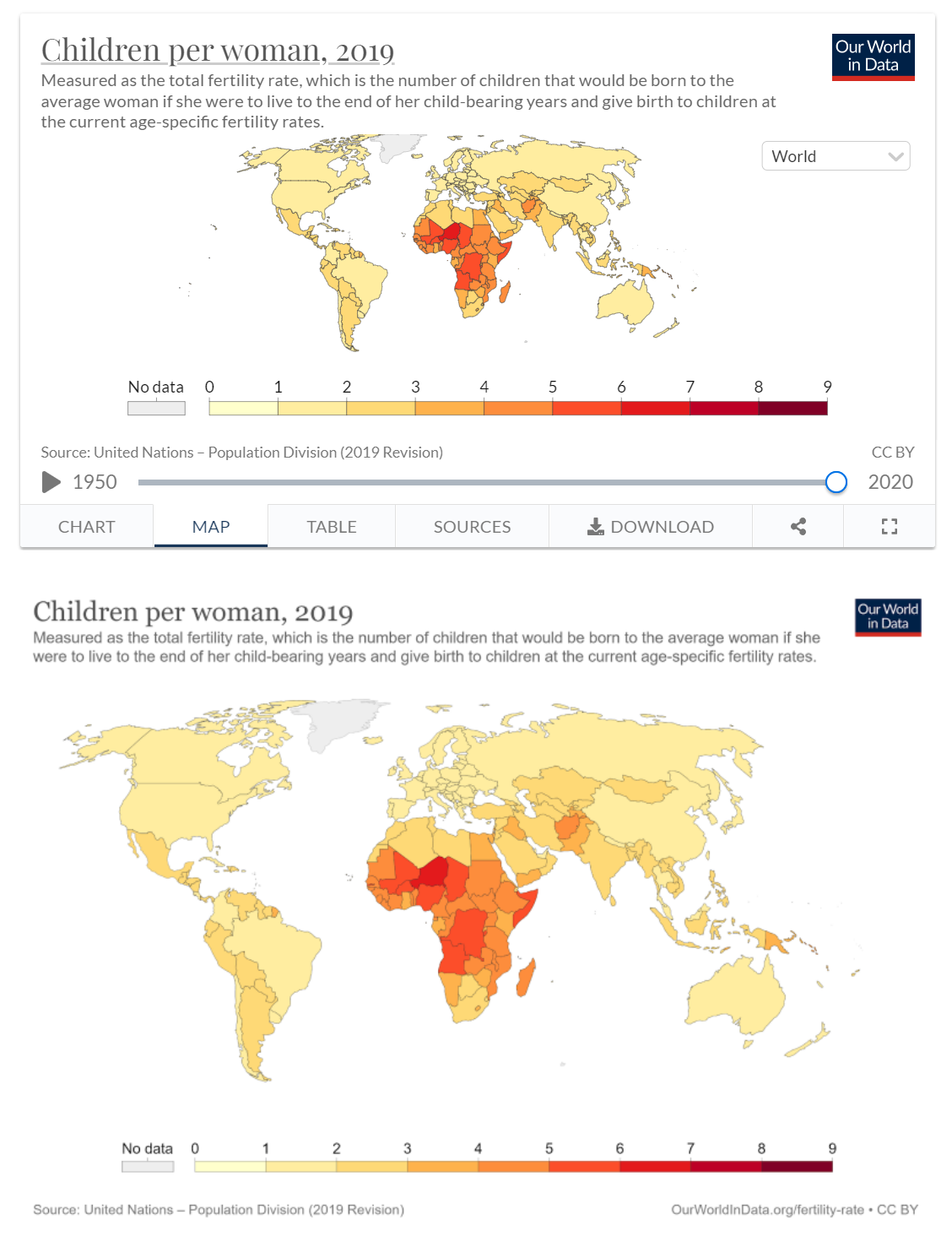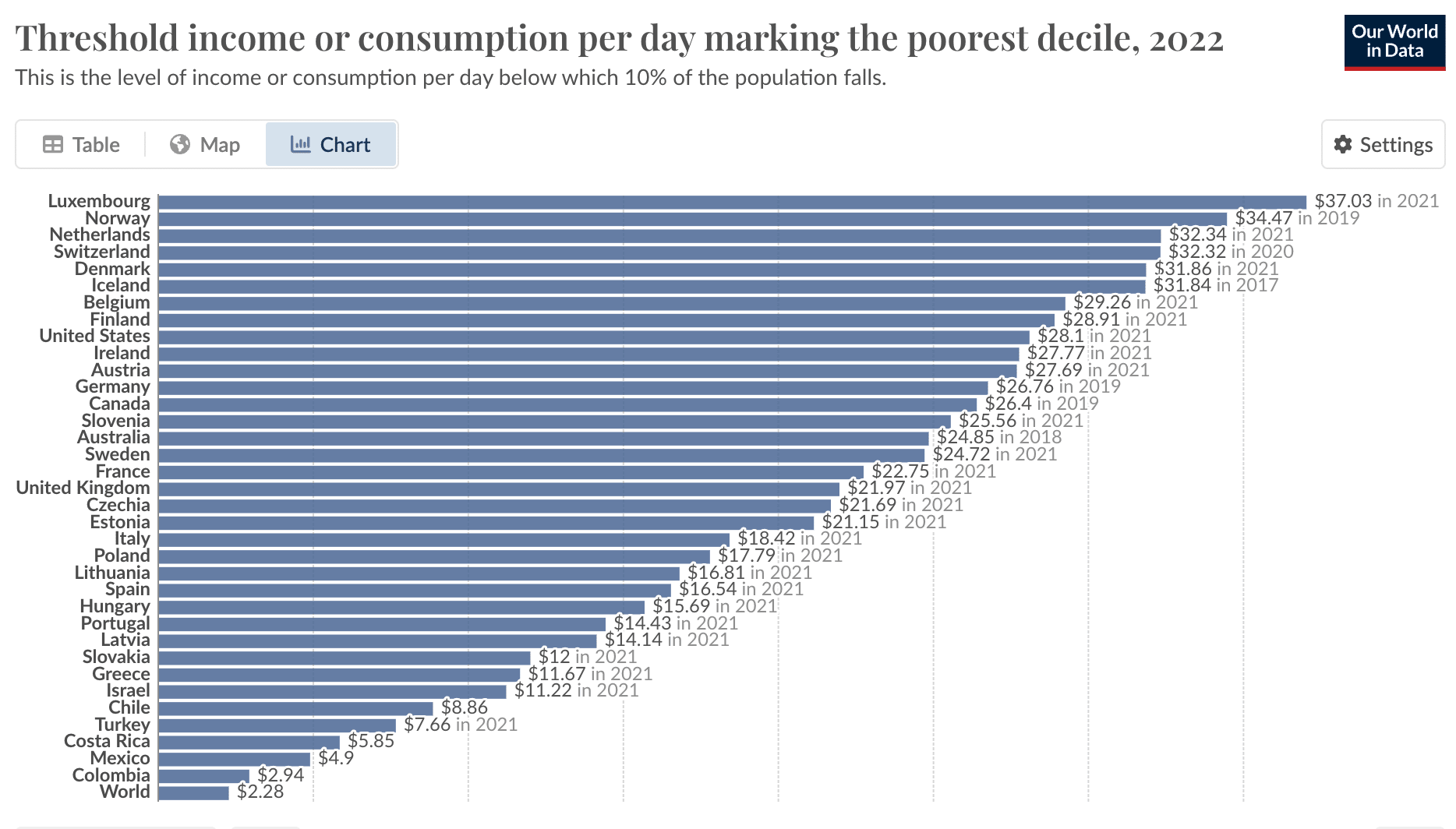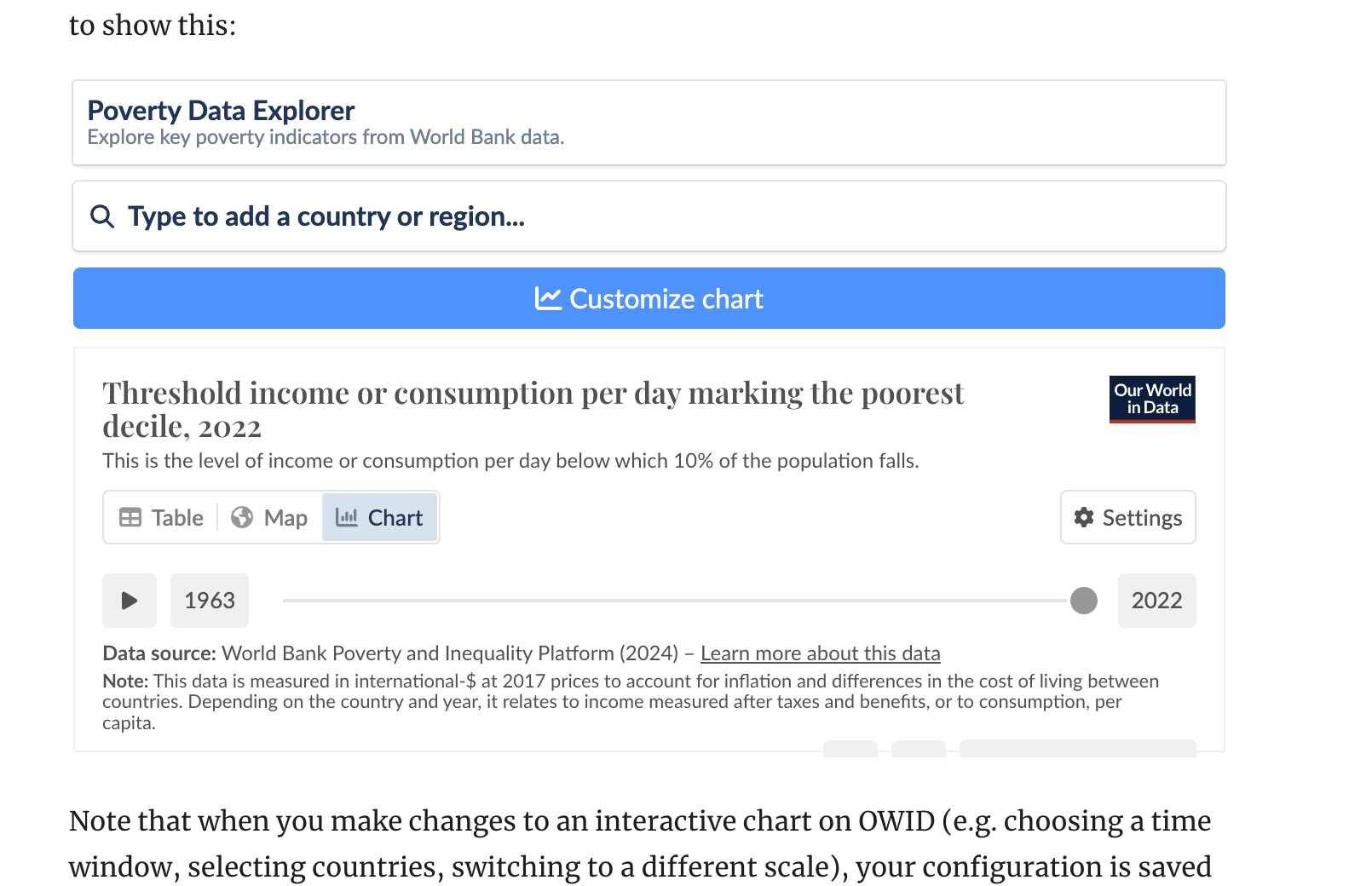You can now integrate Our World in Data charts much more easily into forum posts. These new features work with any of our interactive charts – their URLs look like this:
https://ourworldindata.org/grapher/[name-of-the-chart]Previews on hover
If you add a link to an OWID chart in your text, a preview window will automatically appear when readers hover over it. For example, here's the yearly number of deaths from malaria by age since 1990.
Embedded charts
If you want to make a chart visible directly in your post, you can simply paste the URL and an embedded version of the chart should automatically appear. Here, for example, I'm pasting this:
https://ourworldindata.org/grapher/cost-of-sequencing-a-full-human-genometo show this:
Note that when you make changes to an interactive chart on OWID (e.g. choosing a time window, selecting countries, switching to a different scale), your configuration is saved in the URL. Starting from this chart of primary energy from nuclear, I can make a line chart for G7 countries, and copy the resulting URL from my browser:
https://ourworldindata.org/grapher/nuclear-primary-energy?tab=chart&country=FRA~DEU~USA~GBR~ITA~JPN~CANwhich I can paste here to embed this:
Many thanks to Adam Binks for coming up with this idea at EAGx Oxford!







Are there plans to support OWID's explorer charts? For example this one doesn't render:
Screenshot:
I'll write down the request. I tried previewing what it would look like and it's not perfect
so we'd probably need OWID to make a dedicated preview page.